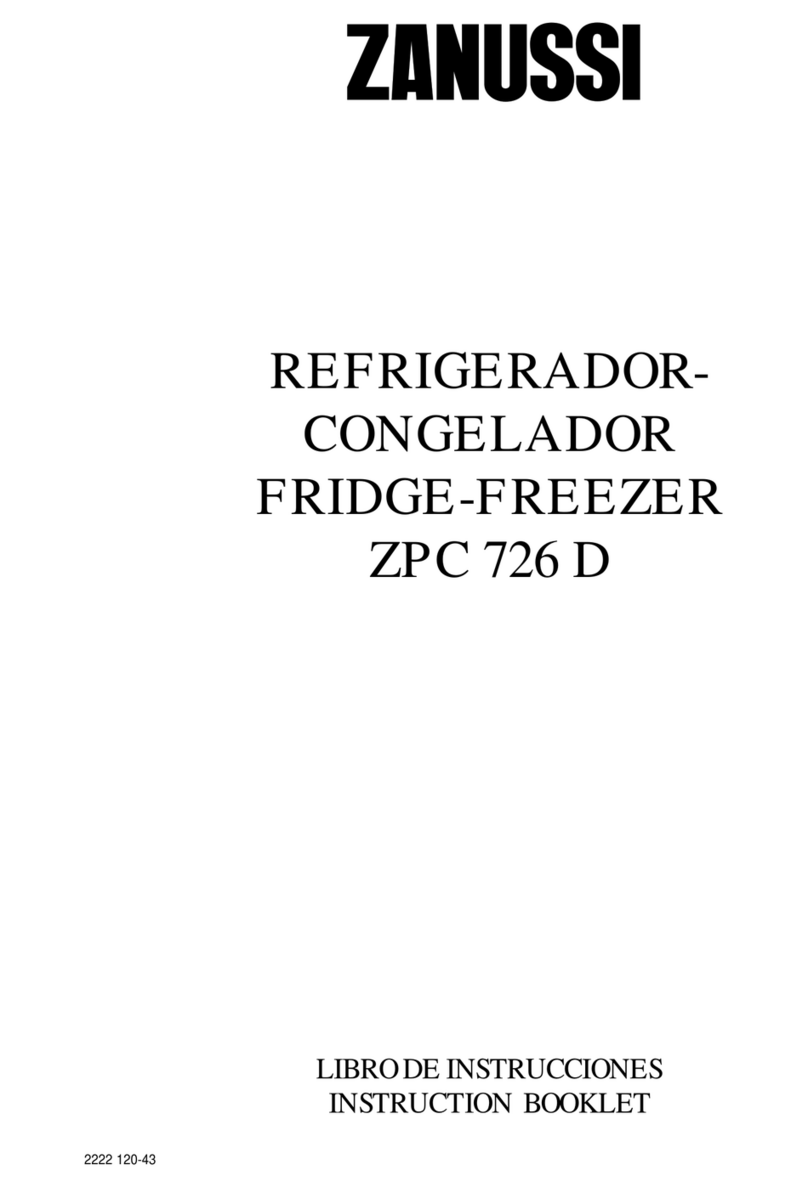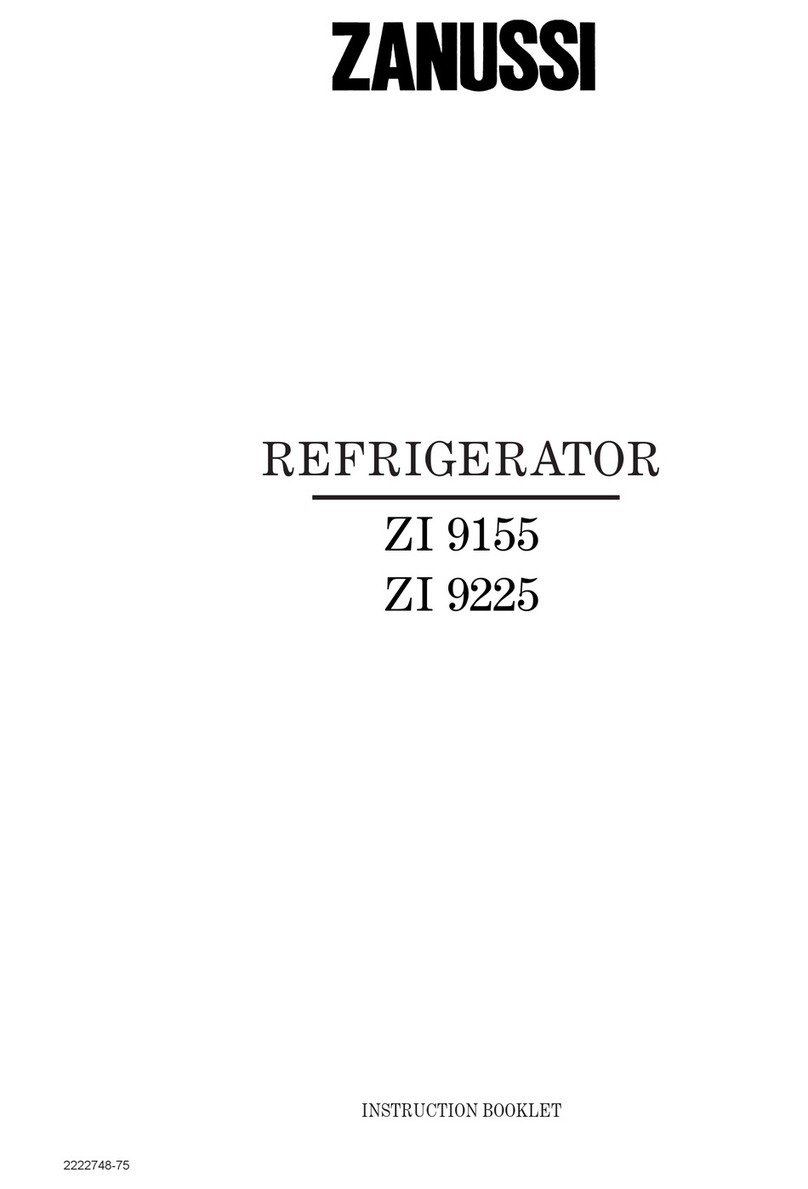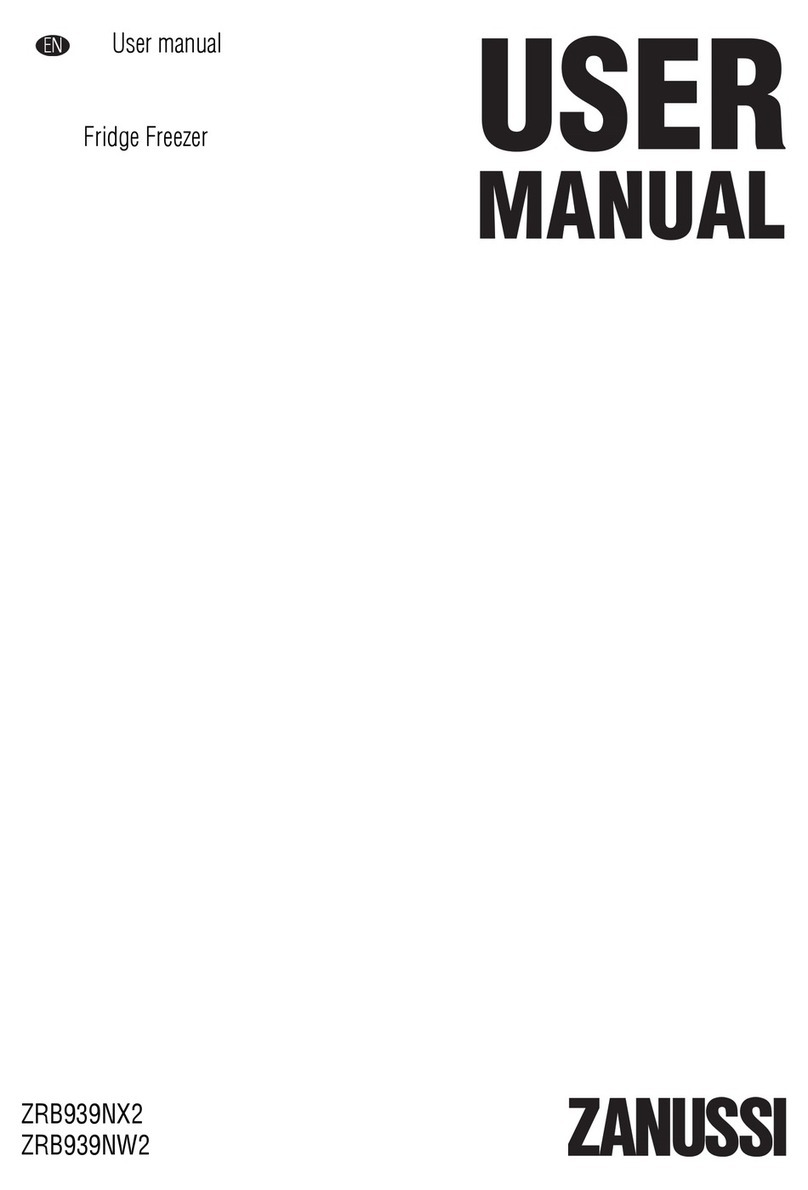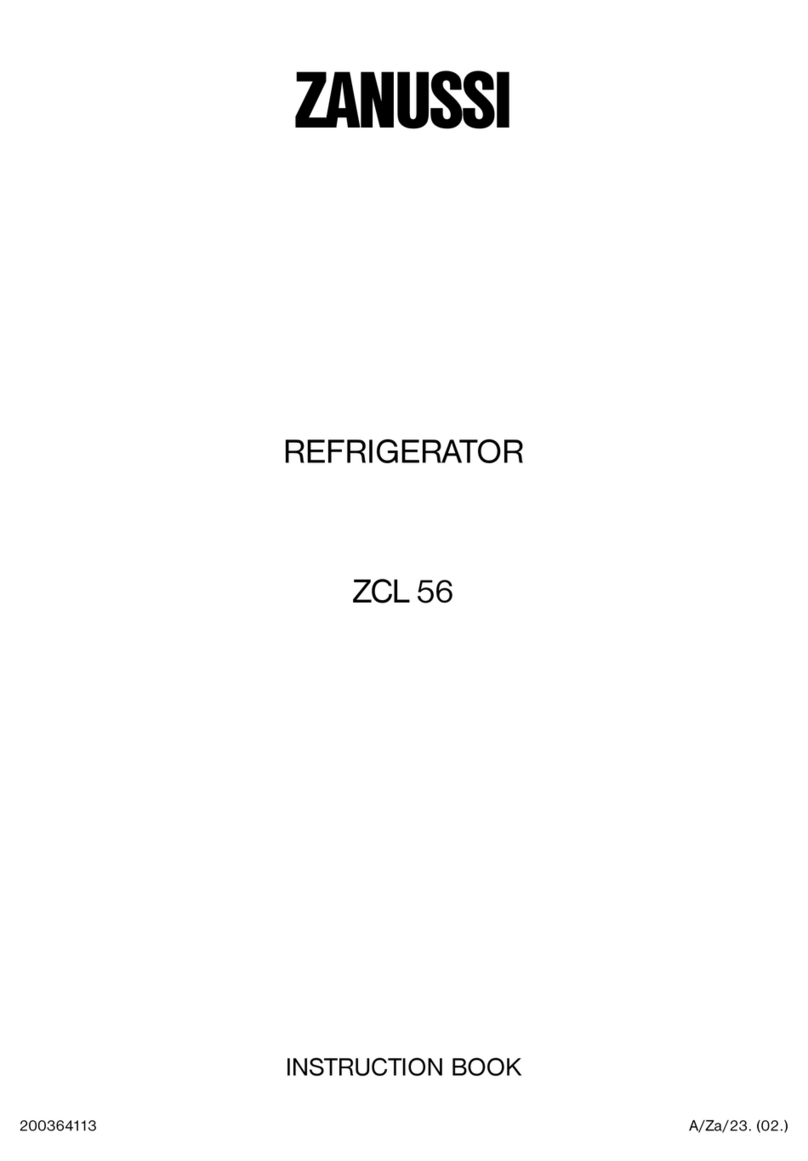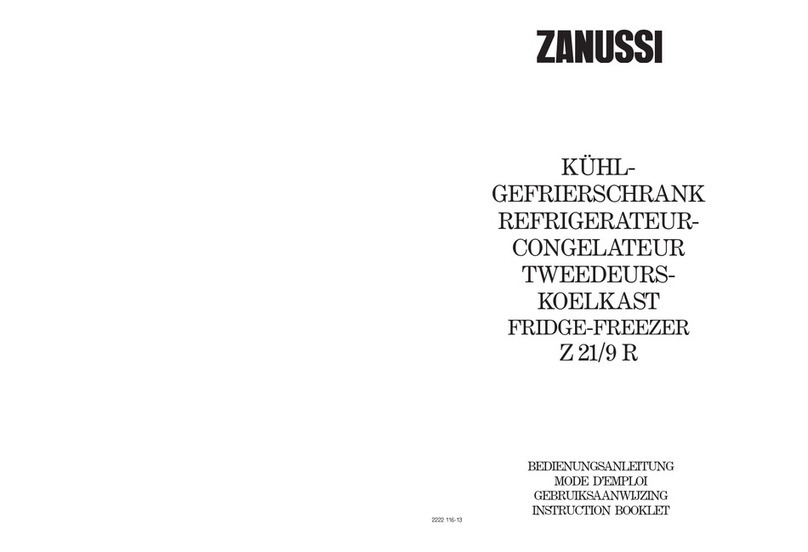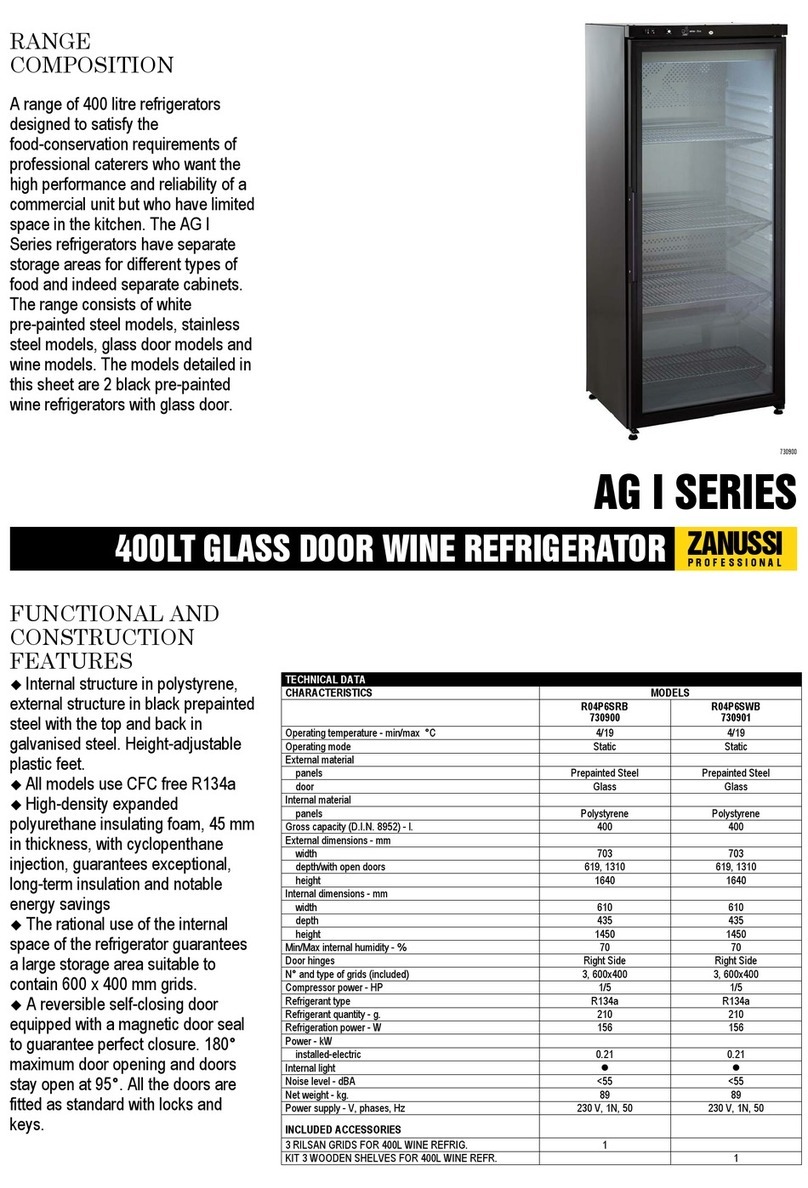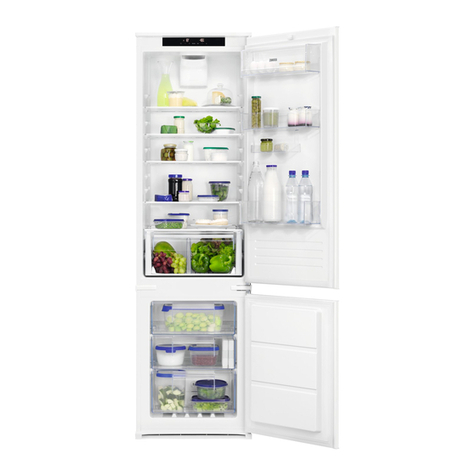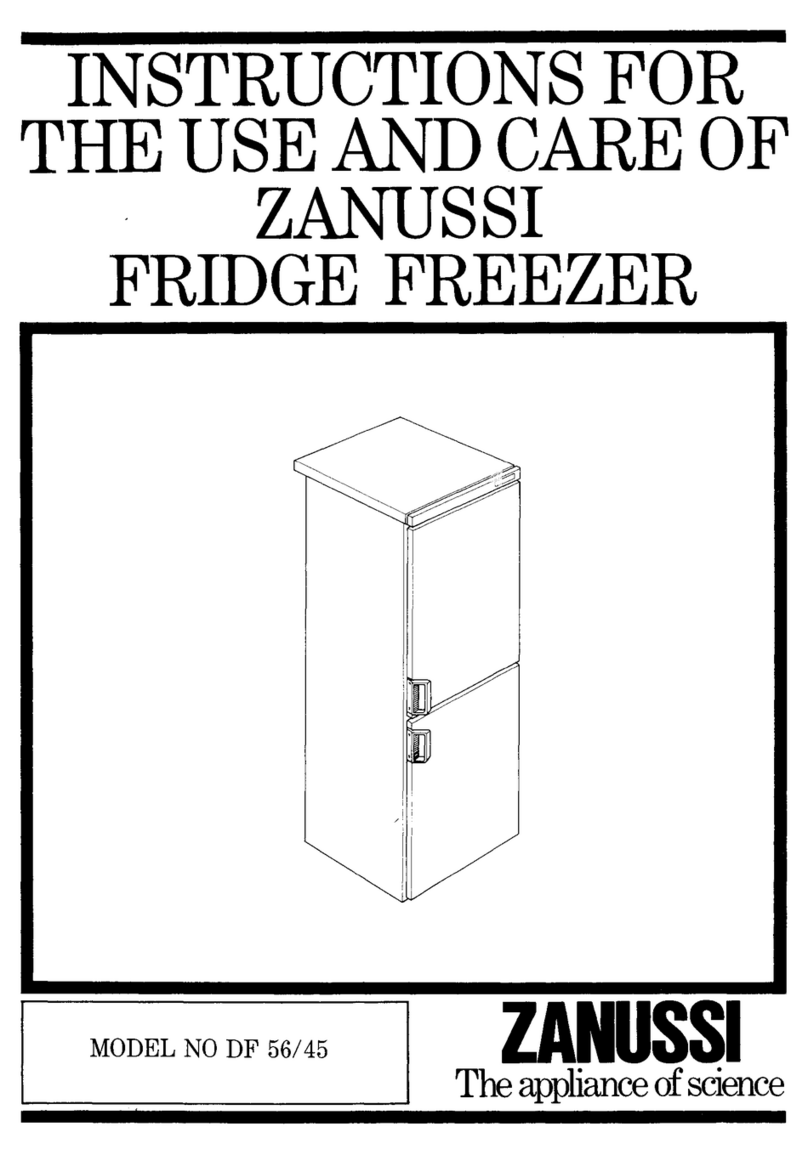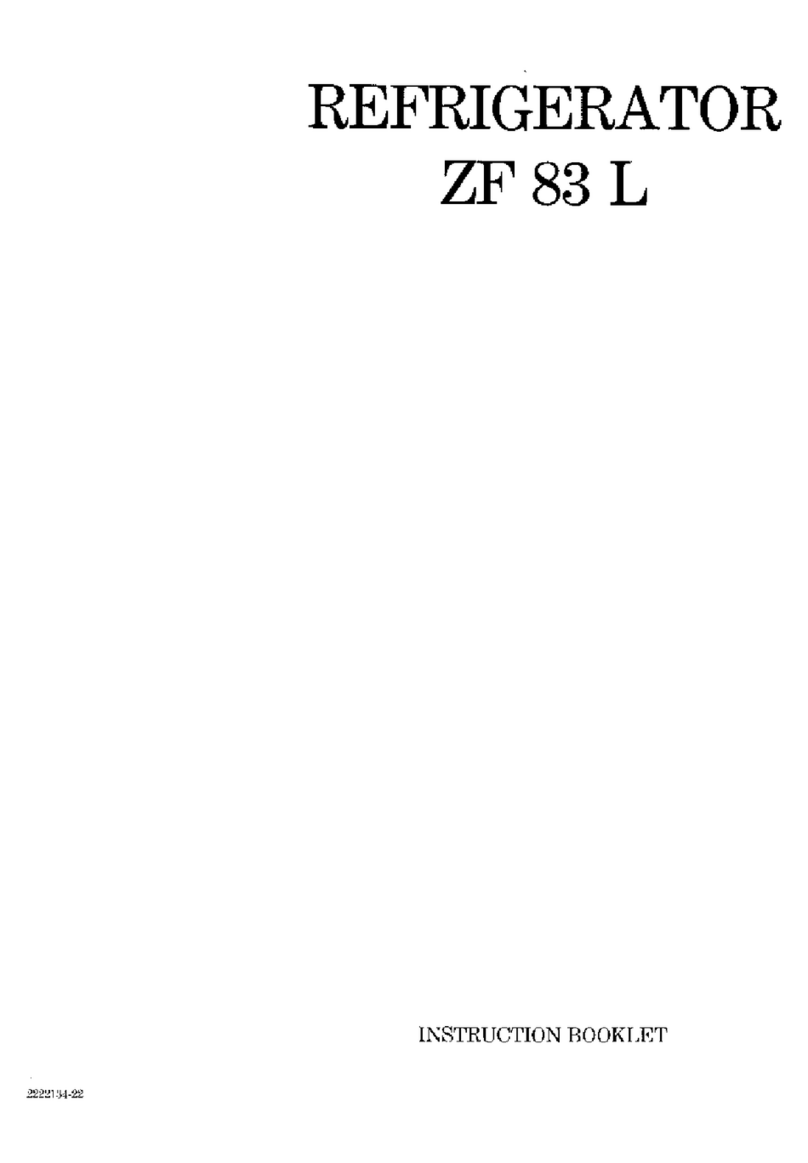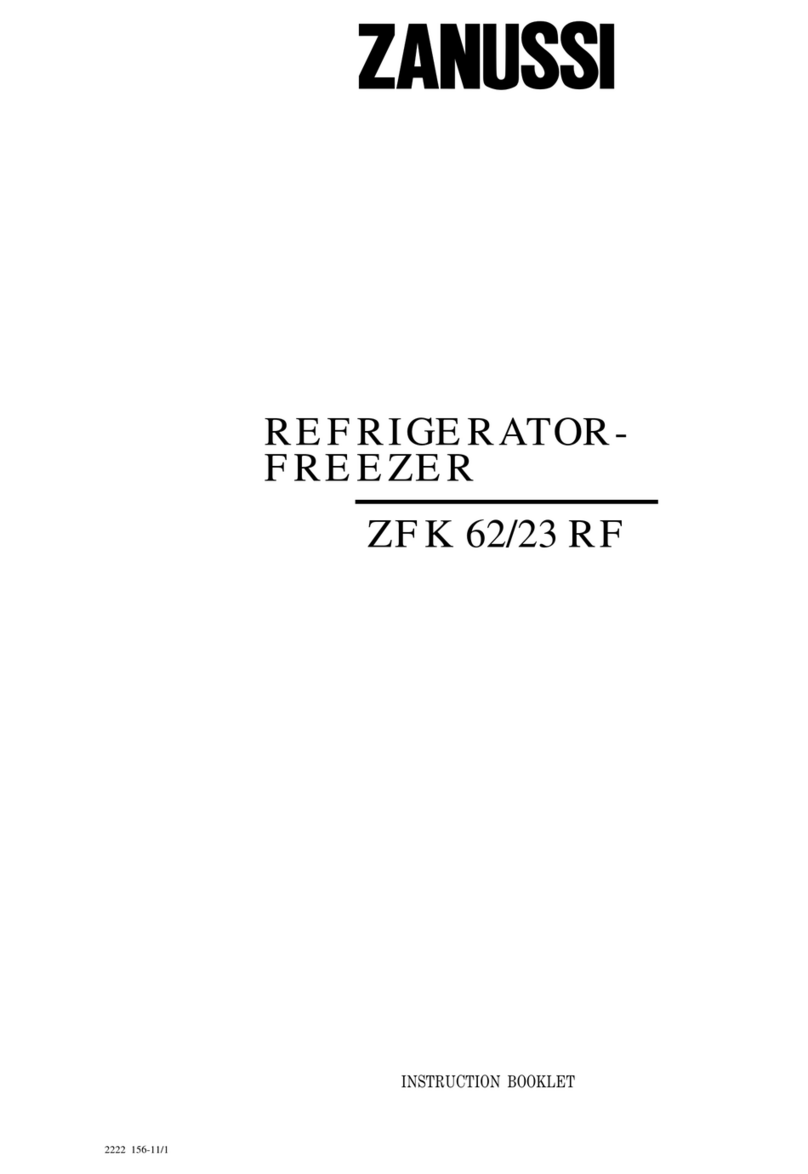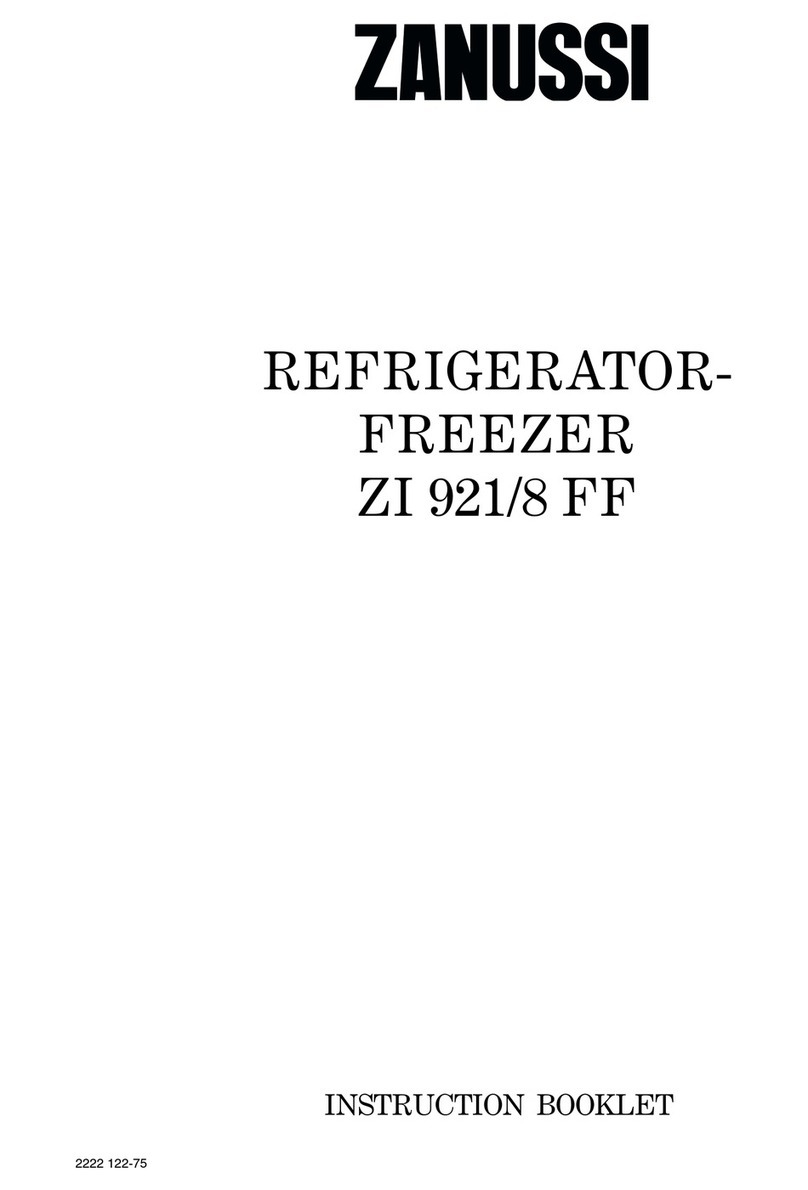2
ADVERTENCIAS Y CONSEJOS IMPORTANTES
Es muy importante conservar este li ro de instrucciones junto al aparato por si fuera necesario
consultarlo. Si el aparato se vendiese o transfiriese a otra persona, acuérdese de entregarlo junto con
él para que el nuevo propietario conozca el funcionamiento de la máquina y sus advertencias.
En caso de que este aparato, dotado de cierre magnético, sustituya uno con cierre automático,
aconsejamos que la cerradura de este último quede inservi le, antes de deshacerse de él. Así se
evitará que los niños, jugando, puedan quedarse encerrados dentro, con grave peligro de sus vidas.
Estas advertencias han sido redactadas para su seguridad y para la seguridad de los demás. Le
rogamos, por lo tanto, leerlas atentamente antes de instalar y utilizar el aparato.
Seguridad
• Desenchufar el aparato antes de efectuar
cualquier operación de limpieza y mantenimiento
(como la sustitución de la bombilla de iluminación
en los aparatos que la poseen)
• Este aparato ha sido proyectado para ser usado
por adultos Por lo tanto, tener cuidado que los
niños no se acerquen para jugar con él
• Es peligroso modificar o intentar modificar las
características de este aparato
• Quitar siempre el enchufe de la toma de corriente
antes de efectuar cualquier operación de limpieza o
manutención (como la substitución de la bombilla en
aquellos aparatos que la tienen)
• No consumir nunca los cubitos de hielo recién
sacados del congelador ya que podrían provocar
quemaduras
• Estos aparatos son pesados Tener cuidado en
los desplazamientos
• Este aparato contiene hidrocarburos en el circuito
refrigerante; por lo tanto el mantenimiento y la
recarga deben ser efetuados exclusivamente por
personal autorizado de la empresa
• Este aparato no contiene en el circuito
refrigerante y en el aislamiento, gases
refrigerantes nocivos para el ozono. El
aparato no de e ser eliminado junto con los
deshechos ur anos y chatarras. Se de e
evitar el daño del circiuto refrigerante, so re
todo en la parte posterior cerca del
intercam iador.
Las informaciones so re los centros de
recepción son suministradas por las
autoridades municipales.
• Prestar la máxima atención durante las
operaciones de desplazamiento para no dañar
las partes del circuito refrigerante a fin de
evitar las posi les salidas de líquido.
• El aparato no de e ser colocado cerca de
termosifones o cocinas a gas.
• Evitar la exposición prolongada del aparato a
los rayos solares.
• La parte posterior del aparato de e reci ir
una circulación de aire suficiente y se de e
evitar cualquier daño al circuito refrigerante.
• Solamente para los congeladores (excluidos
los empotrados): su mejor u icación es el
sótano.
Asistencia
• Cualquier modificación que eventualmente fuese
necesaria a la instalación eléctrica doméstica
para poder instalar el aparato tiene que ser
realizada sólo por personal competente
• Para eventuales intervenciones dirigirse a un
Centro de Asistencia Técnica autorizado y exigir
las piezas de repuesto originales
• En caso de necesitar reparaciones no intentar
hacerlas personalmente Las reparaciones
efectuadas por personas no competentes pueden
provocar daños Ponerse en contacto con el
Centro de Asistencia más cercano y emplear sólo
repuestos originales
Uso
• Los frigoríficos y/o congeladores domésticos
están destinados sólo a la conservación y/o
congelación de alimentos
• Las mejores prestaciones se obtienen con
temperaturas ambiente comprendidas entre
+18°C y +43°C (Clase T); +18°C y +38°C (Clase
ST); +16°C y +32°C (Clase N); +10°C y +32°C
(Clase SN); la clase de pertenencia está indicada
en la placa matrícula situada en la cámara al lado
del cajón verduras
Atención: en caso de temperaturas ambiente
diferentes de las indicadas para la clase climática
a la cual pertenece este producto, es preciso
observar las indicaciones siguientes: cuando la
temperatura ambiente desciende por debajo del
valor mínimo puede suceder que la temperatura
de conservación en el vano congelador no esté
garantizada; por lo tanto, se aconseja que se
consuman a lo más pronto los alimentos
presentes en su interior
Imprimido en papel reciclado

